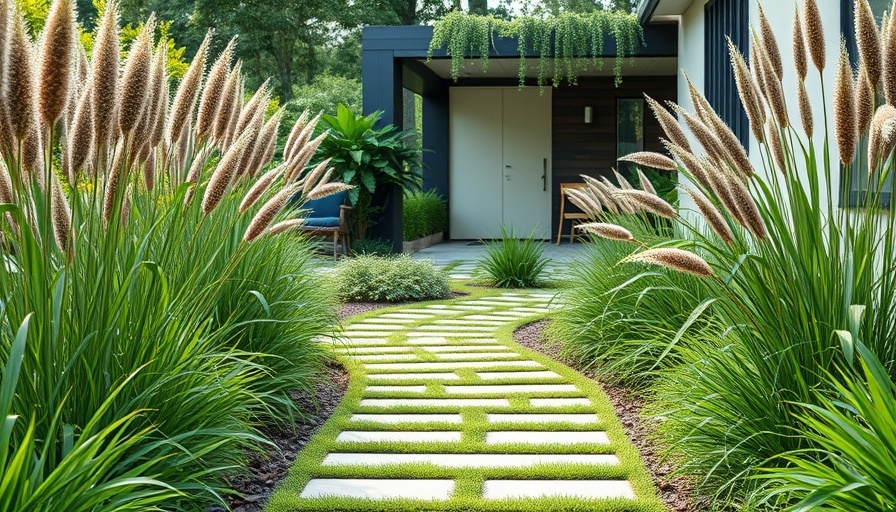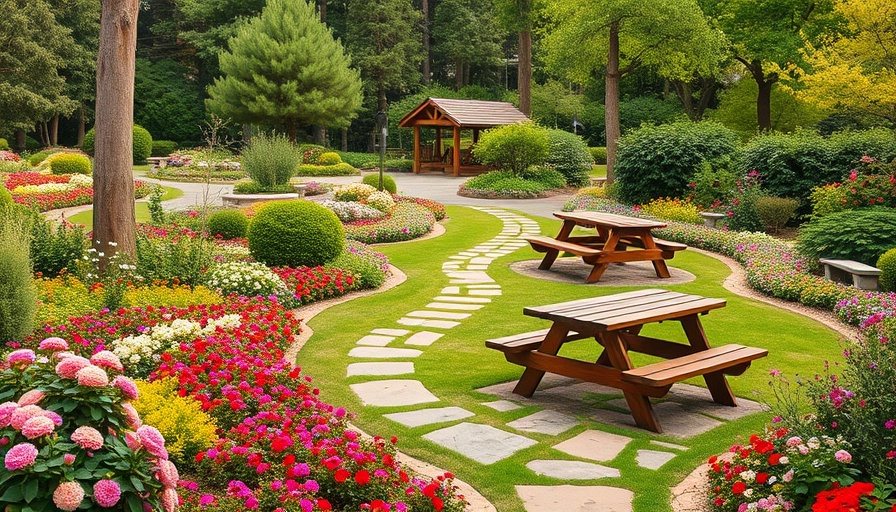
The Art of Designing Memorable Garden Paths
Creating a garden path that captivates is akin to writing a story with your landscape. A well-designed path not only guides visitors through the outdoor space but also enchants them with its beauty and function. Landscape designer Jeff True insists that "a wonderful garden path stands out when there is a terrific balance of natural circulation and function, scale, material selection, and intrigue." So how can homeowners achieve this? Following expert recommendations can transform an ordinary walkway into a striking feature.
Prioritizing Scale: Why Path Width Matters
One of the primary considerations in garden path design is the width. The experts suggest that width should correspond to the path's function. For instance, Hallie Schmidt from Tierra Madre Fine Gardens recommends a minimum path width of four feet for main walkways to ensure a comfortable passage. This width allows two people to converse side by side and enjoy their surroundings. In contrast, paths connecting less frequented areas can be more delicate, at about 2.5 feet wide, according to landscape professionals.
Colin Breme of Core Outdoor Living emphasizes that creating width doesn’t just enhance comfort; it serves as a subtle indicator of direction. A wider path naturally draws the eye toward key destinations, such as a front door or a garden oasis, making it an essential design element in California homes.
Material Selection: Blending Functionality and Aesthetics
The materials chosen to construct garden paths play a critical role in their overall appeal. Popular options include gravel, flagstone, and concrete pavers, each offering unique textures and colors. Gravel paths, for instance, lend an informal and rustic charm while allowing for excellent drainage during rains—particularly beneficial in California’s varying climates.
On the other hand, flagstone can create a more structured and elegant look, enhancing the aesthetic value of a space. When selecting materials, consider not only the visual impact but also maintenance requirements and how well they will withstand local weather conditions.
Enhancing Your Path with Unique Details
Of course, it's not just the path itself that can make a difference; the embellishments along the way determine the pathway's charm. Adding elements such as garden lights, borders, and even sensory plants can transform a simple path into a memorable experience. For instance, edible plants—like herbs—can line the edges, inviting visitors to engage in the space with all their senses.
Additionally, thoughtful landscaping practices, such as integrating natural curves rather than straight lines, can improve flow and aesthetic appeal. This technique mimics natural pathways seen in nature and can create a more inviting atmosphere that encourages exploration.
The Future of Garden Path Design: Expanding Your Creative Horizons
As gardening trends evolve, so does the potential of garden paths. Homeowners now lean toward sustainability not only in plant choices but also in materials. Utilizing recycled stones or eco-friendly concrete can reduce environmental impact while enhancing the visual appeal of the landscape.
With imaginative designs and advanced materials, the future of garden path design is not just functional but also expressive. By embracing innovation and personal preferences, homeowners can create distinctive pathways that are both practical and highly personalized.
Conclusion: Walk Your Way to a Memorable Outdoor Experience
Building a memorable garden path is about more than just materials and widths. It's about crafting a narrative that flows naturally with your garden's character and enhances your home's curb appeal. As you embark on creating your outdoor path, remember that every choice—from width to material, lighting to plants—plays a crucial role in inviting guests into your beautiful landscape. Take time to plan, consider professional advice, and find inspiration in both nature and innovative garden designs.
 Add Row
Add Row  Add
Add 




Write A Comment